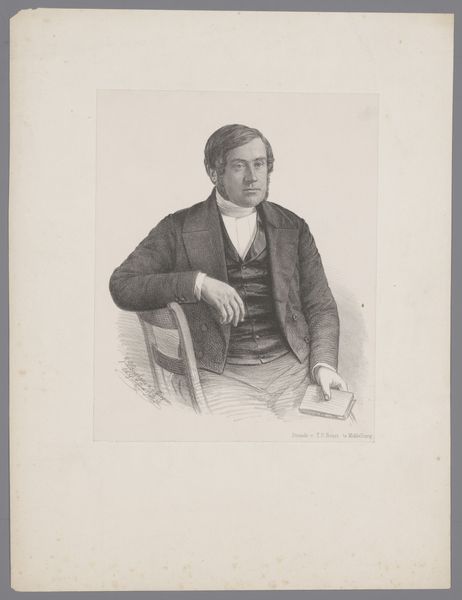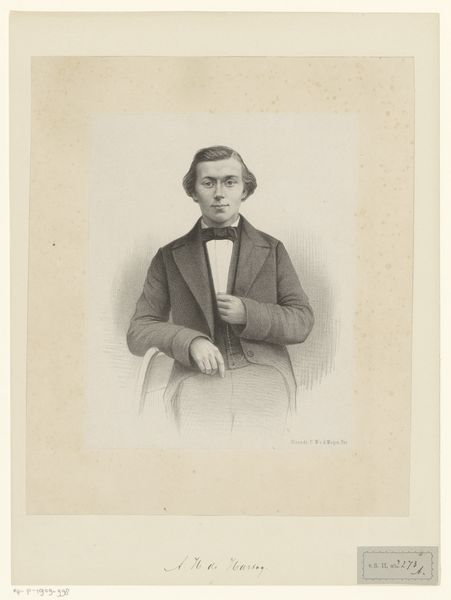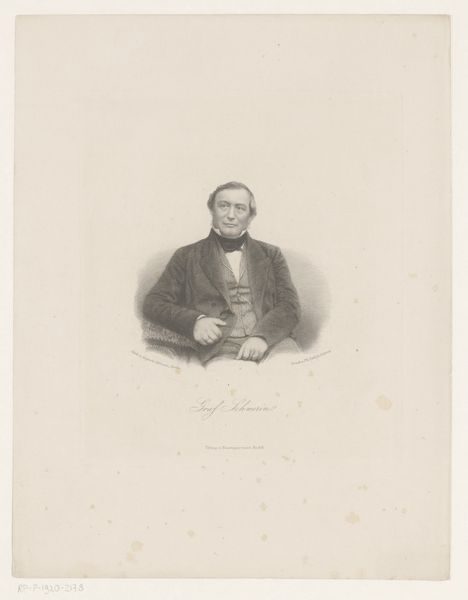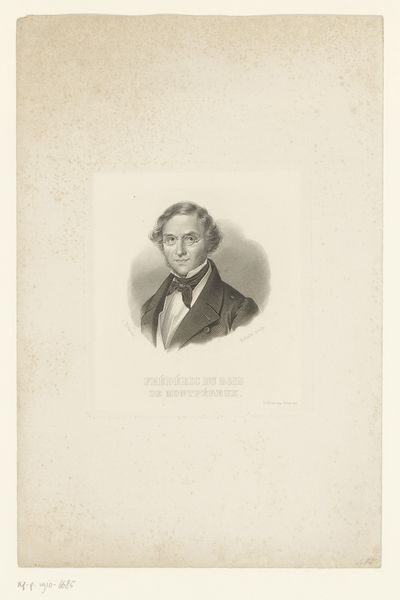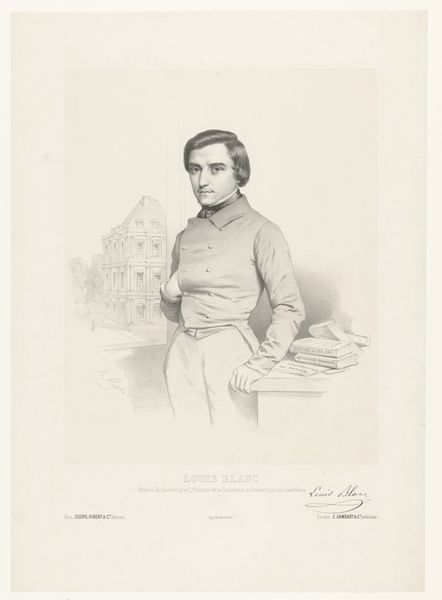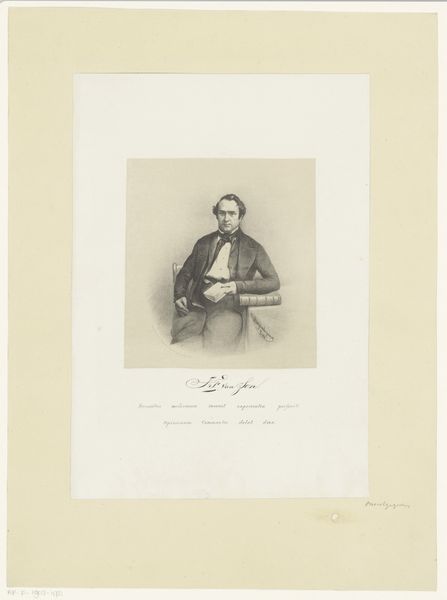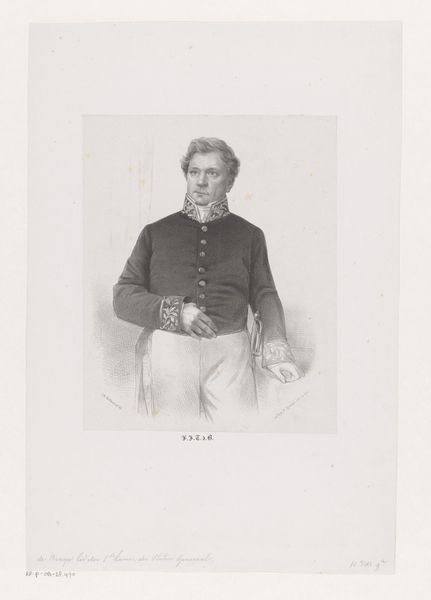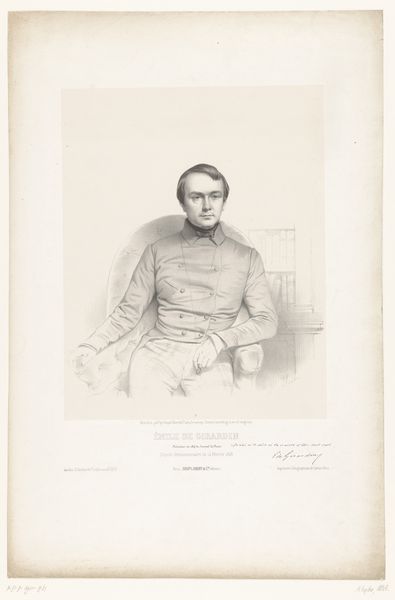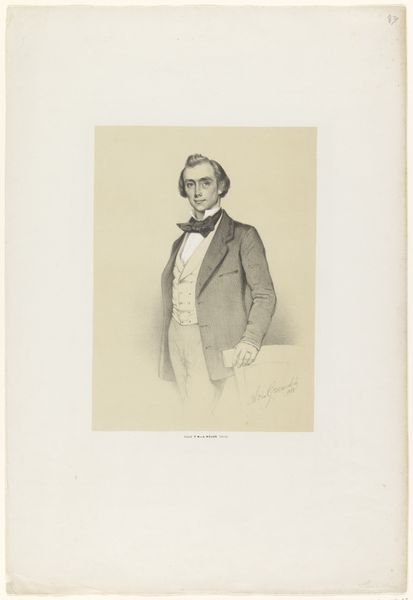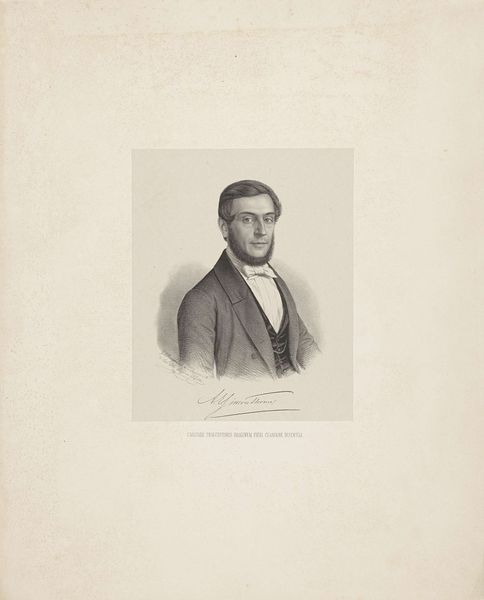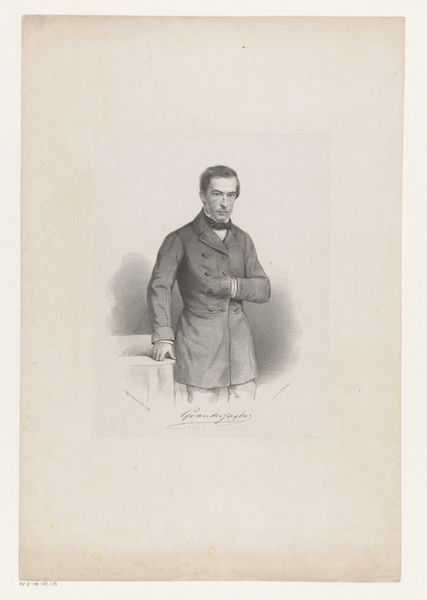
drawing, pencil, graphite
#
pencil drawn
#
drawing
#
pencil sketch
#
pencil drawing
#
pencil
#
19th century
#
graphite
#
portrait drawing
Dimensions: height 711 mm, width 564 mm
Copyright: Rijks Museum: Open Domain
Curator: This is Carl Wildt's "Portrait of Franciscus Cornelis Donders," rendered between 1830 and 1860 using pencil and graphite. It's quite a formal depiction, isn't it? Editor: Yes, immediately I notice a certain somberness in the figure’s gaze, a restrained melancholy almost. And the soft, muted tones of the pencil work enhance that feeling. Curator: Donders, a prominent Dutch ophthalmologist, was a leading figure in applying quantitative methods to physiology. Portraits like this served a crucial role in disseminating images of scientific authority. Editor: Absolutely. And considering Donders’s work on visual perception, there's an intriguing layer to contemplate: How he himself saw, and how he wanted to be seen. Did he consciously construct an image, understanding the politics embedded within such representations? Curator: Indeed. Consider how portraits reinforced power structures. Donders, posed with a leaning posture, conveys authority. This portrait probably reinforced his institutional power as a scientist, even promoting a kind of scientific persona. Editor: It makes me consider the limitations, too. This depiction certainly captures a moment, an aspect, but I wonder what aspects of Donders’s identity or personality are actively excluded, and whether class or gender come into play when looking at scientific achievement. Curator: Certainly, and his pose could speak to contemporary societal values and gendered expectations, conveying intelligence with an elegance suitable for the upper classes of that period. Editor: I appreciate Wildt's subtle technique. The delicate shading around the eyes captures his intellect, his curiosity. Curator: And a certain ideal of male intellectualism. Wildt uses his medium adeptly, making the drawing a social and cultural document that reveals more than just likeness. Editor: This makes us consider art as more than the aesthetic appreciation of an image; here it prompts considerations about representation, scientific progress, social standing, and gender constructs. Curator: Ultimately, this portrait gives insight into how a particular individual, Franciscus Donders, was perceived and wished to be perceived within the context of nineteenth-century scientific and social hierarchies. Editor: So, through these lines of graphite, we're not just looking at Donders, but a complex historical intersection of power, perception, and identity.
Comments
No comments
Be the first to comment and join the conversation on the ultimate creative platform.
